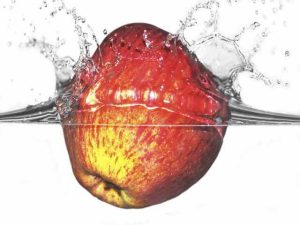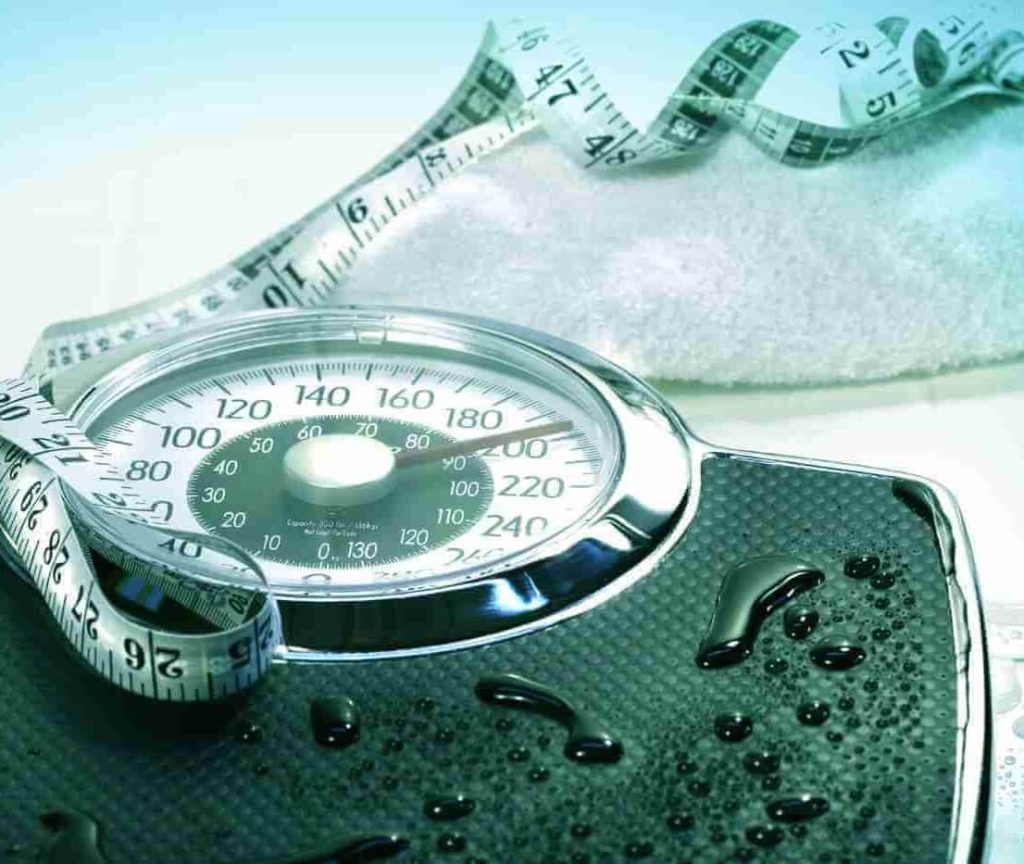Why Your Waist Measurement Matters So Much More
As a nutritionist, I get asked a lot about weight and what a ‘healthy’ weight should be. And I see a lot of angst about that particular number on the scale.
What you weigh can matter but only to a certain extent. There are many other more critical and relevant measures of good health.
Let’s look at one such critical marker: your waist circumference AKA ‘belly fat’ or as my Dad used to call it when he pinched mine ‘speck’(a German culinary term for fat with a little meat in it – ummm….thanks, Dad!).
Do you remember the fruity body shape descriptions you used to read about in magazine quizzes: being like an apple or a pear or the newest one I’ve seen, an avocado?
The apple is very round around the middle (you know, kind of beer belly-ish) and the pear is smaller on top and heavy through the hips/thighs. The avocado? Sort of in the middle – not quite as small on top, not as big in the butt. Rather curvy.
Do you know which shape is associated with a higher risk of sleep apnea, blood sugar issues (e.g. insulin resistance and diabetes) and cardiac issues (high blood pressure, blood fat, and arterial diseases)?

And it’s not because of the subcutaneous (under the skin) fat that some refer to as the dreaded ‘muffin top’. The health risk is actually due to the fat inside the abdomen covering the liver, intestines and other organs there. This internal fat is called visceral fat and that’s where a lot of the problem actually lies. It’s that ‘unpinchable’ fat.
The reason the visceral fat can be a health issue is because it releases fatty acids, inflammatory compounds, and hormones that can negatively affect your blood fats, blood sugars, and blood pressure.
Apple-shaped people tend to have a lot more of this hidden visceral fat than pear-shaped people do. So as you can see, where your fat is stored is more important than how much you weigh. And that’s definitely one of things I look at when working with my clients, well beyond the number on the scale.
Am I an Apple?
It’s pretty simple to find out if you’re in the higher-risk category or not. The easiest way is to just measure your waist circumference with a measuring tape.
Women, if your waist is 35” or more, you could be considered to have “abdominal obesity” and be in the higher-risk category. (Pregnant mamas are exempt, of course.). For men, the number is 40”.
Of course, this isn’t a diagnostic tool. There are lots of risk factors for chronic diseases. Waist circumference is just one of them. If you have concerns, definitely, consult your naturopathic or medical doctor.
However, as a nutritionist, I can offer up a few simple tips that will help you take some steps to lower your risk and perhaps even lower the circumference of your belly:
- Eat more fiber. Fiber can help reduce belly fat in a few ways. It helps you feel full and also helps to reduce the amount of calories you absorb from your food. Some examples of high-fiber foods are brussels sprouts, flax and chia seeds, avocado, and blackberries.
- Add more protein to your day. Protein reduces your appetite and makes you feel fuller for longer. It also has a high TEF (thermic effect of food) compared with fats and carbs and that can help boost your metabolic rate, meaning you may be burning more energy (calories) more efficiently. Having adequate protein also ensures you have enough of the amino acid building blocks to build, maintain and help your muscles recover after exercise.
- Nix the added sugars! This means ditch the ultra-processed sweetened foods – especially those sugary drinks (even 100% pure juice). These foods are guaranteed to raise your insulin levels and given that insulin is known as an energy (fat) storage hormone – guess what? You are going to store fat, especially around your belly because that’s where most of your insulin receptors live. For some people, a lower carbohydrate paleo- style or ketogenic-style eating plan – when approached in a balanced and educated manner – is helpful to overcome excess belly fat.
- Move more. Get some aerobic exercise. Lift some weights. Walk and take the stairs. Movement helps with metabolism and metabolism helps burn energy (calories). Even in 10 minute spurts at a time, it all adds up.
- Stress less. Seriously! Elevated levels in the stress hormone cortisol have been shown to increase appetite and contribute to increases in abdominal fat. One simple way to help lower your cortisol levels is deep breathing, from the diaphragm. Think about a baby and how their little bellies rise and fall as they sleep and breathe in a deep and relaxed manner. So be like a baby! Lie on the floor, or sit in a chair with your eyes closed, and focus on letting your belly go in and out and in and out as you breathe for 5 -10 minutes. You’ll be helping to pamper your adrenals, home of the cortisol hormones.
- Get more sleep. There are hundreds of studies now showing that lack of sleep (less than 6 hours of restful sleep every night) is linked to significant increase of abdominal fat, in addition to an increased risk of diabetes and heart disease. Focusing on better sleep habits is an often overlooked but critivcal part of good health. And nutrition can help here too as several key foods – walnuts, kiwis, tart cherries, yogurt just to name just a few – have been known shown to help regulate and promote sleep.
Apple? Pear? Avocado? How about Brussels Sprout? You may not be shaped like one – but the tasty side dish below is chock full of fibre which may help you control that waistline! Enjoy.
If you want more info on dietary strategies for belly fat or healthy meal ideas to help change your shape, reach out to our nutrition team.
Certified Holistic Nutritionist and Wellness Educator

Serves 4
Ingredients:
- 1 lb brussels sprouts (washed, ends removed, halved)
- 2-3 cloves of garlic (minced)
- 2 Tablespoons extra virgin olive oil
- 2 teaspoons fresh lemon juice
- sea salt and pepper (to taste)
- zest of 1 lemon
- 2 Tablespoons sliced almonds or walnuts (toasted) –optional
Directions:
- Preheat oven to 400F.
- In a bowl, toss sprouts with garlic, oil, and lemon juice. Spread on a baking tray and season with sea salt and pepper.
- Bake for about 15 minutes. Toss. Bake for another 10 minutes.
- In a dry skillet, toast nuts (watch them closely – nuts burn easily!)
- Sprinkle nuts and lemon zest on top of veggies just before serving
References:
http://www.precisionnutrition.com/research-abdominal-fat-and-risk
http://www.precisionnutrition.com/visceral-fat-location
http://www.drsharma.ca/inspiring-my-interest-in-visceral-fat
https://www.hsph.harvard.edu/obesity-prevention-source/obesity-definition/abdominal-obesity/
http://www.hc-sc.gc.ca/fn-an/nutrition/weights-poids/guide-ld-adult/qa-qr-pub-eng.php#a4
https://authoritynutrition.com/6-proven-ways-to-lose-belly-fat/
https://authoritynutrition.com/20-tips-to-lose-belly-fat/
https://www.sleepfoundation.org/articles/sleep-linked-gains-abdominal-fat
